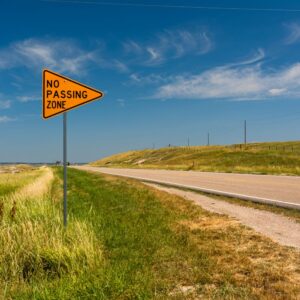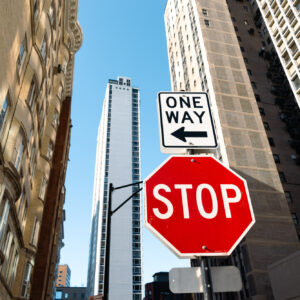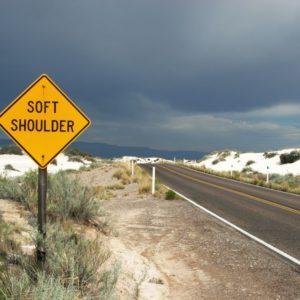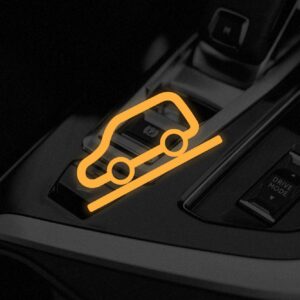The right-of-way is the legal right to use the road first. When multiple drivers reach an intersection from different directions, not everyone has the right-of-way. Some drivers must yield to others and wait until it’s safe before they can proceed.
But what does yielding mean in driving? How will you know when you must yield the right-of-way to other drivers?
What Does Yielding Mean in Driving?
In driving terms, yielding is giving the right-of-way to other people on the road. Drivers operating their vehicles, cyclists riding bicycles, and pedestrians can have the right-of-way.
Yielding the right-of-way involves driving with care to reduce the risk of accidents. You must check your surroundings for other vehicles, bicycles, and pedestrians that have the right-of-way on the road. If you spot any of them, reduce your speed. If the situation requires you to stop, engage the brakes and wait for them to pass.
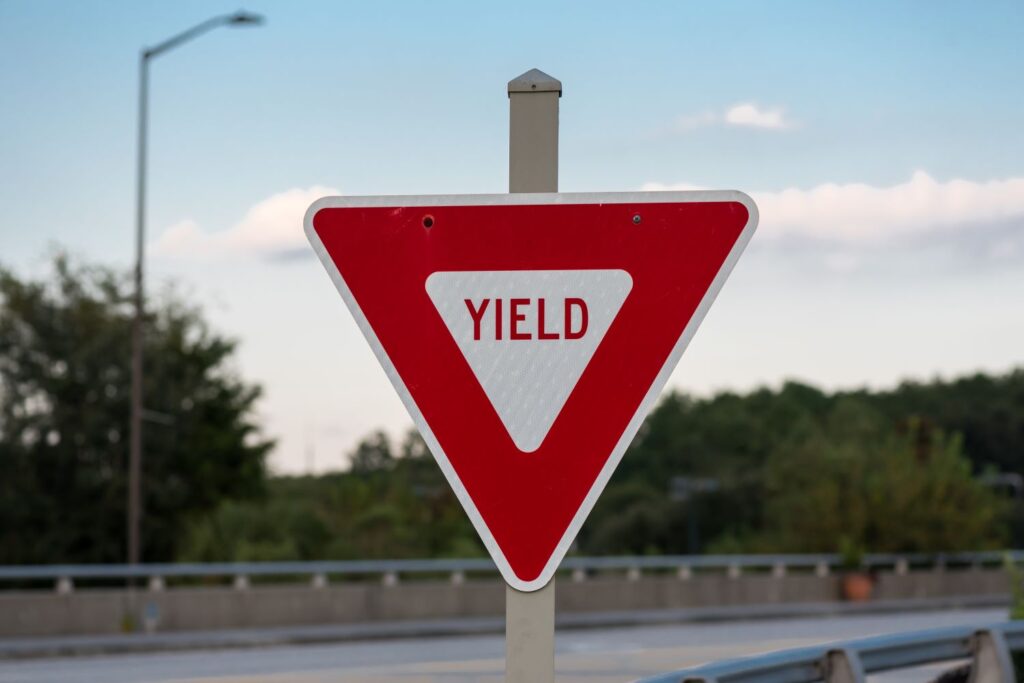
What Is a Yield Sign?
The yield sign determines where you must yield the right-of-way to others on the road. It’s a downward-pointing triangle with equally long sides, a white background, and thick red borders. Many yield signs will also have the word YIELD printed on their face.
On remote roads, you might also encounter yields that are decades old. These earlier signs have yellow backgrounds, thinner black borders, and the text RIGHT OF WAY below YIELD. The earliest yield signs have a keystone shape; they resemble an inverted trapezoid.
Most yield signs are standing signs planted on the side of the road.
What Are Yield Lines?
You might also see a line of white isosceles triangles stretching across the road surfaces. The painted transversal markings form a yield line.
Yield lines indicate where drivers must yield the right-of-way to other vehicles or people. They’re sometimes called shark teeth for their resemblance to the jagged denticles jutting from the fish’s maw. You can often find them near intersections or mid-block crosswalks.
A yield line does the same job as its sign counterpart. Sometimes, you can find a yield line and a yield sign at the approach to the same intersection.
Yield Line and Yield Sign Meaning
Yield signs and lines are regulatory traffic signs. Their primary role is to indicate who has the right-of-way in areas with high vehicular or pedestrian traffic. They help stop accidents and congestion by establishing who should use the road first, which reduces the number of vehicles and people attempting to cross the road at a given time.

Common Locations For Yield Signs and Yield Lines
Yield signs and yield lines usually appear on areas with multiple intersecting roads where many vehicles pass through the intersection. It’s far more common to find standing signs instead of road surface markings, but both types appear together in some places.
On highways, you can find yield signs at merging areas. These signs assist drivers in merging onto express lanes.
Areas with high pedestrian traffic usually have yield signs and yield lines. Schools, for instance, put up signs where drivers can easily see the visual reminder to drive slowly and carefully on streets that children often cross or walk on.
What Should You Do When You See a Yield Sign or Yield Line?
When you spot a yield sign or line, reduce your speed. If you need to stop, engage the brakes and wait for vehicles or people with the right-of-way to pass you. Otherwise, you can continue driving at a slower speed.
Check your surroundings for other vehicles. Be aware of their course and location.
Watch out for pedestrians at the intersection. It might not be a crosswalk, but people might still walk across it. Keep an eye out for any children and pay close attention to them. Between their small size and unpredictable movement, kids can catch you off guard.
Are you driving on a road with multiple lanes, and another vehicle in a different lane has the right-of-way? Decelerate and let the other driver pass you before picking up speed again.
Empty intersections with no vehicles or pedestrians are easy. While you must drive slowly and proceed carefully, you don’t have to stop at the yield sign or line.
If the intersection is busy with vehicular traffic, the right-of-way usually goes to the vehicle that reaches the area first. Resist the temptation to race other drivers to the intersection. If you arrive at the intersection first, you can cross it before vehicles that have arrived later than yours.
Always err on the side of safety. Stop at the yield sign or line and wait for other vehicles or pedestrians to pass before proceeding to your destination.
Differentiating Between Yield Signs and Stop Signs
You might have noticed some similarities between yield signs and stop signs. Both types control traffic to keep vehicles moving smoothly.
The most obvious difference is their appearance. A yield sign is an inverted triangle with YIELD, while a stop sign is an octagon with the prominent message STOP.
More tellingly, you don’t have to stop at a yield sign. If the crosswalk or intersection is empty, you can drive past the sign at a slower speed.
In contrast, a stop sign requires you to stop your vehicle until you can safely pass. Think of the stop sign like a red traffic light, and one you can’t beat.
Learning when and where to yield the right-of-way to others helps protect you and everyone else on the road.
Any information provided on this Website is for informational purposes only and is not intended to replace consultation with a professional mechanic. The accuracy and timeliness of the information may change from the time of publication.


